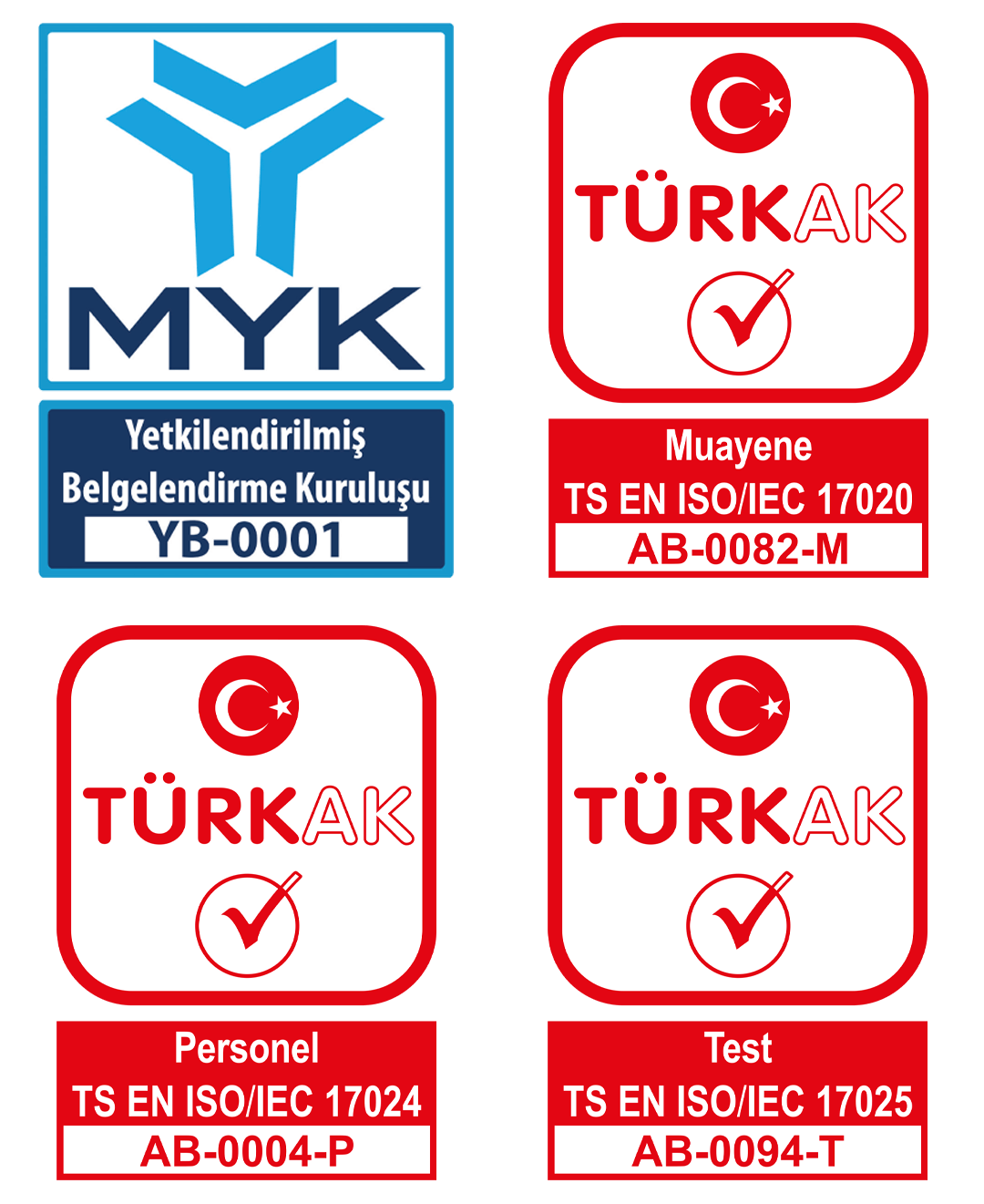Natural Gas Meter Calibration
In 2005, we implemented a meter laboratory project covering natural gas meters from G2.5 to G1600 capacity. At the beginning of 2006, we passed the necessary inspections from the Ministry of Industry and Trade of the Republic of Turkey and received accreditation from the Turkish Accreditation Agency (TÜRKAK) and started to perform gas meter calibration, repair and maintenance services with high precision.
What are the Stages of Meters' Calibration (test-inspection) Processes?
1) Incoming meters are first received by our warehouse personnel and their bodies, numerators, seals and stamps are visually checked. In the next stage, meter data is entered into the ERP program and inter-warehouse transfer processes are managed.
2) Our meters, after data entry, are cleaned of foreign objects and dirt in the washing-cleaning area, made suitable for painting and sent to the testing area.
3) The meters are taken to the conditioning area in our test laboratory, brought to thermal balance under suitable temperature and humidity conditions for testing.
4) The meters are connected to suitable test units according to their types and capacities in the methods specified by the regulation and the testing processes are started.
5) The serial number, brand, type and manufacturing year information of the meters are entered into the test unit software and recorded one by one.
6) According to the test or inspection process, compliance reports are created for meters within the working ranges, and non-compliance reports are created for meters outside the working ranges or with body and mechanism defects.
7) Our suitable meters are transferred from the testing area to the painting area, and then the meters are subjected to painting and baking processes on the electrostatic wet painting unit conveyors in this section.
8) Finally, the meters that have undergone the painting and resting processes are taken to the meter support unit and are made ready for re-installation by going through the numerator, resetting, meter sealing and stamping processes, respectively.
What are the Benefits of the Testing, Inspection and Calibration Procedures We Perform for Natural Gas Meters?
Accurate Billing: Correct calibration of meters ensures fair and accurate billing by accurately measuring the amount of energy consumed. Consumers pay according to their actual consumption and avoid unnecessary costs.
Efficient Energy Management: Calibrated devices measure and monitor energy consumption more precisely. In this way, energy is saved, environmental impact is reduced and costs are reduced.
Reliability: Correctly calibrated meters increase the trust between the consumer and the energy company. Consumers trust the accuracy of the bills presented by the energy company and a transparent process management is ensured.
Prevention of Errors: Regular calibration of meters prevents incorrect measurements caused by technical errors and wear. This increases the accuracy of consumption data and abnormal situations are detected in a timely manner.
Legal Compliance: In our country, it is a legal obligation to perform Test, Inspection and Calibration processes of energy meters in accordance with standards and regulations at certain periods. In this way, compliance of energy companies with legal regulations is also ensured.
As a result, testing, inspection and calibration processes provide economic and environmental benefits to consumers by measuring energy consumption accurately. Accurate and reliable measurements increase energy efficiency and help use resources more efficiently. At the same time, it strengthens the trust between consumers and energy companies thanks to transparent and fair billing.
What are the Types of Calibration We Use in Natural Gas Meters?
1) Accuracy (Measurement Error) Tests
2) Pressure Loss Test
3) Periodic Inspection
4) Metrological Repeatability Test
We support energy efficiency and sustainable energy use with accurate and reliable measurements.



